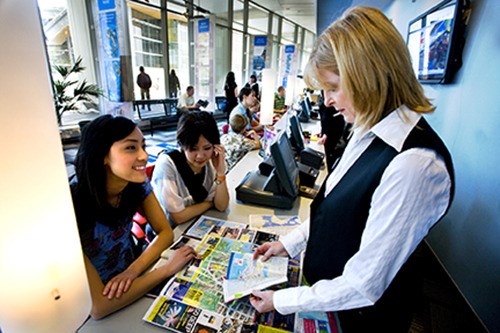Its known in the travel industry as the shoulder season the summer sightseers have packed up and left, and the winter visitors have yet to arrive but despite the onslaught of soggy weather, Vancouver continues to attract plenty of travellers during the autumn months.
Whether they are lured by cheaper hotel rates, fewer crowds or the various arts and cultural festivals that take place in fall, visitors from Canada, the U.S. and overseas help the local tourism industry thrive in October and November.
This is a really cultural time of year, said Amber Sessions, manager of travel and trade media relations at Tourism Vancouver. Fall festivals such as Eco Fashion Week and the Eastside Culture Crawl draw out-of-town visitors, especially short-haul rubber tire traffic from Washington State and other parts of BC.
Meanwhile, Tourism Vancouvers visitor services staff have an arsenal of suggestions for travellers searching for dry activities.
When its rainy outside, theyre going to be recommending things like the Vancouver Aquarium or the Museum of Anthropology or the Vancouver Art Gallery those great cultural spaces that are great places to visit any time of year, but are particularly good when you cant really be outside having a picnic in the park, Sessions said.
For job-seeking locals, Sessions said the restaurant industry could see a bump this fall as tourists, and Vancouverites,seek to congregate indoors. Meanwhile, the North Shore Mountains will soon be hiring for the busy ski season, Sessions said.
According to a study of labour demand and supply by go2, the BC tourism industrys human resource association, BCs tourism industry will be a leader in provincial job growth as businesses look to fill 101,000 new job openings by 2020.
BCs tourism and hospitality industry is now the single largest primary resource industry in the province, generating an annual real GDP of more than $6.4 billion in 2010, ahead of forestry, mining, oil and gas extraction and agriculture. The fastest growing sectors for tourism job growth over the next decade are expected to be recreation and entertainment and travel services.
After several years of slow labour growth, the tourism industry is poised to expand, said Arlene Keis, chief executive officer of go2. Labour shortages are already being felt in places like Northern BC, the Thompson Okanagan and in the Rockies regions. By 2016, the crunch will be more acute throughout the province.
This anticipated growth in tourism reinforces the need to plan carefully and ensure that there are enough workers with the right skills in the right communities to meet the tourism industrys future labour needs, said Keis.



